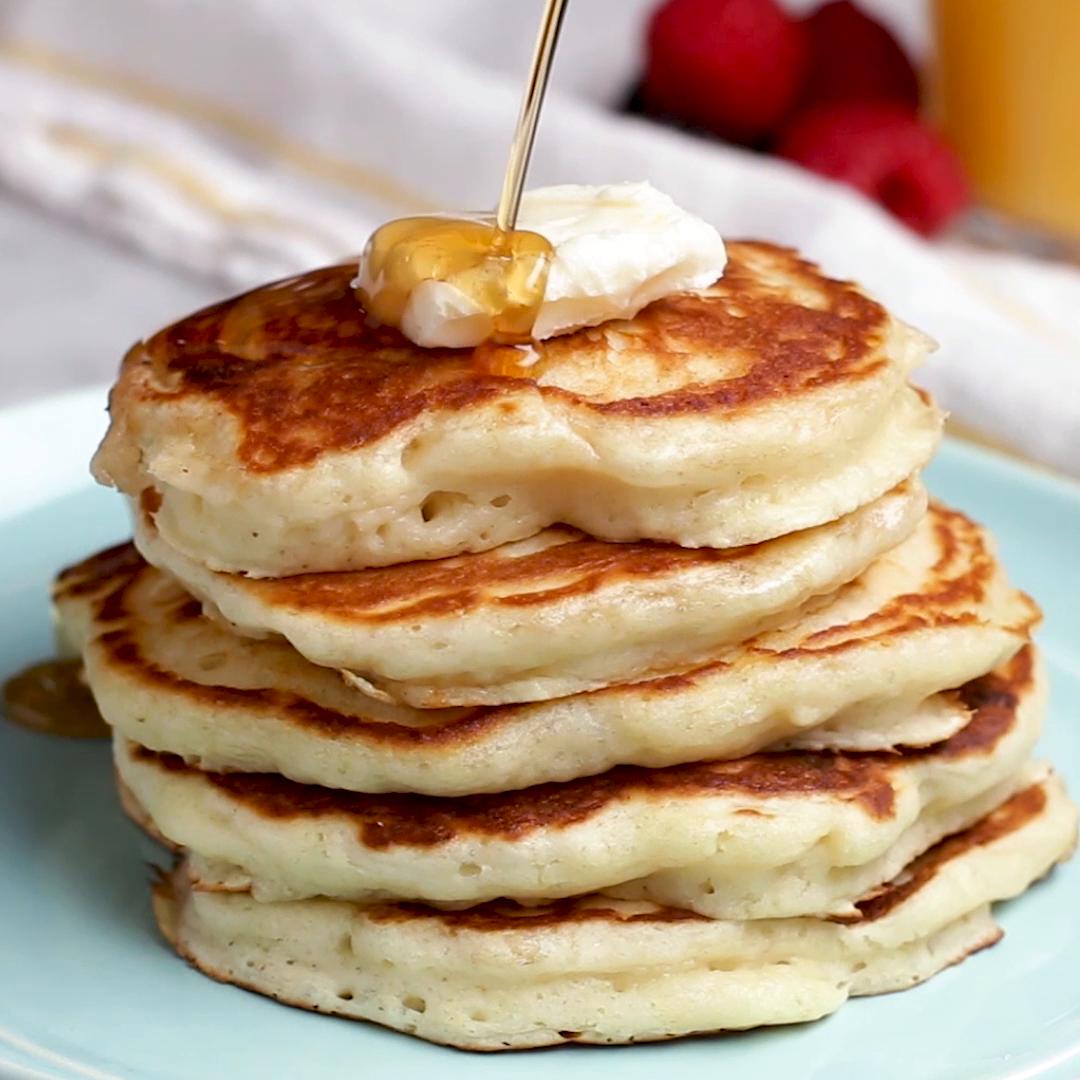Introduction
For my project,I decided to experiment the effect that butter has on the fluffiness of the pancakes. Even though I have made pancakes before, I have never thoght about the scientific effects simple ingredients such as sugar, butter, and baking soda has on the fluffiness of the pancakes.
Background Information
Pancakes has been around for centuries. In fact, the idea and the recipe for pancakes started 30,000 years ago in the Stone Age. Pancakes were made from wheat flour, olive oil, honey, and curdled (gradually solid) milk in the Greek and Roman empire. The term ‘’pancake’’ was used in the 15th century, but the name became strongly established with the food in 19th century America. Before then, pancakes were referred to with many names such as indian cakes, johnnycakes,buckwheat cakes, journey cakes, buckwheat, flapjack, griddle cakes, and hoe cakes. Fun fact: Shakespeare wrote about pancakes in his famous plays, and Thomas Jefferson sent a recipe to his home town from the White House because of his love for pancakes.(1)
The Science of Pancakes
The general ingredients you need in order to make pancakes are: flour, sugar, baking powder, baking soda, salt, buttermilk, eggs, and butter. There are two parts to a pancake: dry ingredients, and wet ingredients. Eggs gives the pancakes more protein, whiles the sugar and butter make the pancakes softer. Flour, sugar, baking powder, baking soda and salt are dry, while milk, eggs and butter are wet. Flour has a protein called gluten, which creates the structure of pancakes and it also is what makes pancakes chewy. Gluten molecules rarely move when the flour is dry.So when flour is mixed with water, the gluten molecules start to get active, resulting in them separating from one another and stretching out to change shapes. Eventually, the gluten proteins bond with each other, ultimately creating a chain of proteins that trap the air bubbles. When the leavener (substance that makes the baking soda rise) in the baking soda makes bubbles in the pancake, the gluten traps the bubble to make the pancake rise and stay in the fluffy shape. (2)
To summarize, the chemical reaction is between a leavening agent such as baking soda and baking powder and acidic agents like buttermilk producing air bubbles from the pancakes. The air bubbles are then trapped by the gluten to make the pancakes fluffy.
Experiments and Results
The independent variable in my research was the amount of butter in the pancaes. All the ingredients, amounts, and temperature was kept constant.
Recipe and Instructions
- Set the temperature of the stove to a constant 7.
- Gt 2 cups of flour.
- 1 teaspoon of baking powder.
- Mix 2 eggs.
- Add 1 pinch of salt.
- 3 drops of vanilla extract.
- 1 and a half cup of buttermilk.
- Depending on the amount of butter used, let it melt.
- Oil up the pan and the pan be properly drenched with oil.
Trial One
With the first trial, I decided to not use any butter. It was fluffy enough, but it was not as the pancakes were expected to be.The pancakes cooked for the longest out of all three trials.
Trial Two
With the second trial, I decided to use 7 grams of butter. It was softer thicker, and ultimately more fluffier than the first pancake. Theses pancakes were easier to flip. This batch to less time to cook.
Trial Three
Analysis/Conclusion
As stated in the Background Information section, the chemical reaction in pancakes was that when a leavening agent like baking soda interacts with an acidic agent such as buttermilk, it produces air bubbles from the pancakes. The air bubbles are then trapped by the gluten in the flour, which makes the pancakes keep its form and stay fluffy. As also stated in the Background Information section, sugar and butter make pancakes softer As the results in this experiment shows however, the more butter was added to the mixture of the pancakes, the softer the pancakes were. For example, the first trial pancakes looked flat and were cooked the longest, the second pancakes were fluffier as the butter was implemented, and the last batch looked the thickest and the most fluffy as i added more butter. This also resulted in the pancakes being fluffier as more butter was added to the mixture. This means that, while butter does not play a major role in the fluffiness of a pancake, it makes the pancakes softer. The pancakes being softer then resulted in the pancakes being fluffier. In conclusion, the more butter added to the mixture of the pancakes, in a less relative form, the fluffier pancakes become.

Comments
Post a Comment